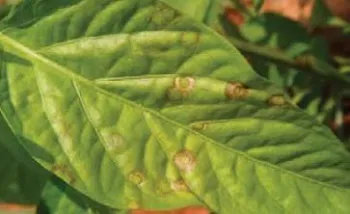 Capscium chlorosis virus (CaCV) is a Tospovirus responsible of significant economic losses in capsicums, chillies and tomatoes in Hawaii, Australia, India and South East Asia. CaCV is emerging as economically important and as such, its host range is still not completely known. CaCV is known to occur on several weeds which play an important role in the survival and dispersal of the virus, which is transmitted by thrips.
Capscium chlorosis virus (CaCV) is a Tospovirus responsible of significant economic losses in capsicums, chillies and tomatoes in Hawaii, Australia, India and South East Asia. CaCV is emerging as economically important and as such, its host range is still not completely known. CaCV is known to occur on several weeds which play an important role in the survival and dispersal of the virus, which is transmitted by thrips.
The scientists at Department of Agriculture and Fisheries in Brisbane (Australia) refer "CaCV was shown to be common and widespread in the weed host Ageratum conyzoides in eastern coastal regions of Queensland, Australia with up to 92% of plants infected. CaCV was also found as natural infections of Arachis hypogaea (peanut), Ananas comosus (pineapple), Sonchus oleraceus, Tagetes minuta and Emilia sonchifolia. This is the first report of CaCV infecting pineapple and being associated with severe disease symptoms. As regards the insect vector, Thrips palmi, Frankliniella schultzei and Microcephalothrips abdominalis were shown to transmit CaCV, while no transmission was achieved using F. occidentalis".
Source: Sharman M., Thomas J.E., Tree D., Persley D.M., 'Natural host range and thrips transmission of capsicum chlorosis virus in Australia', 2020, Australasian Plant Pathology, Vol. 49 (1), pag. 45-51.
